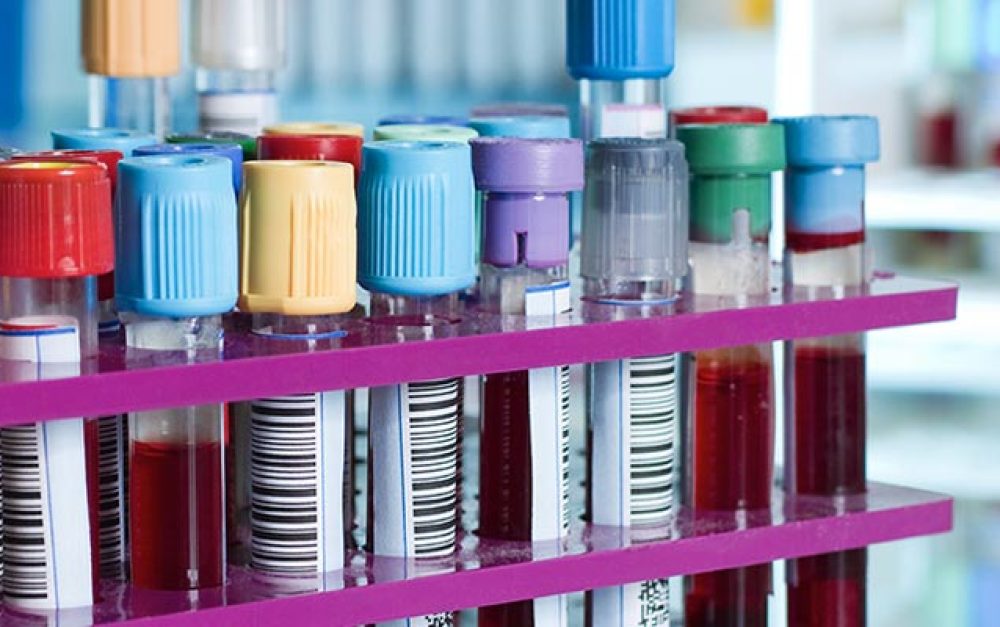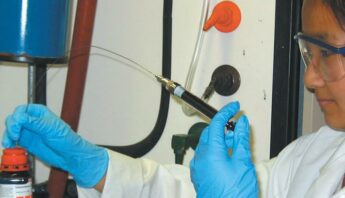Pesticides and industrial chemicals can be measured in any human fluid or tissue. The type of testing done is determined in part by the properties of the chemical in question.
To find long-lasting chemicals — such as organochlorine pesticides like DDT — researchers test blood or breastmilk. These persistent toxins break down very slowly in the body, with half-lives ranging from months to decades. Studies of chemicals in breastmilk have been conducted around the world for many years. In some European countries, breastmilk samples are “banked” so they can be tested as new methods of detecting chemicals are developed.
To measure chemicals that pass through the body more quickly — such as the organophosphate pesticide chlorpyrifos — scientists take urine samples. Such chemicals may be carried in the body for a matter of hours or days following exposure, making the timing of biomonitoring critical. Researchers will often collect 24-hour urine samples over a period of several days when pesticide spraying is being conducted or exposure is otherwise possible.
Many chemicals can pass from mother to child during pregnancy. Studies looking for chemicals in the environment of developing infants measure amniotic fluid or the cordblood of newborns. One such study identified an average 200 contaminants — including organochlorine pesticides — in newborn cordblood.
Biomonitoring studies often test both for a chemical and its breakdown product, or “metabolyte.” Studies may also measure biological markers that the body produces (or fails to produce) in response to the presence of a chemical. For example, exposure to certain pesticides inhibits the body’s production of an enzyme called cholinesterase. In California, a baseline level of the enzyme is established for farmworkers, and periodic testing over the course of the growing season is then required to measure cholinesterase in workers’ blood. If enzyme activity is low, steps must be taken to reduce pesticide exposure.
Study size matters
Some biomonitoring studies test thousands of subjects, while others test 10 or 12 individuals. These two types of studies give us distinct types of information, and are useful in very different ways.
Government-sponsored studies such as the Center for Disease Control and Prevention’s National Report on Human Exposure to Environmental Chemicals sample the blood and urine of thousands of subjects, and retest for the same chemicals over time. Such large-scale, long-term studies identify chemicals of widespread concern, track trends in human exposure to pollutants, and can even document the impacts of shifts in policy. The Swedish government’s longterm testing of human breastmilk, for example, showed a dramatic drop in contaminant levels in response to organochlorine pesticide bans.

Smaller studies can document exposures in particular communities where there is concern about chemical contamination. This can raise awareness among the affected community, among those responsible for releasing the pollutants, and among policymakers responsible for community protection. California’s state biomonitoring program, for example, identifies “communities of concern” where risk from environmental contaminants is high and biomonitoring may identify exposure risks that need to be addressed.
Many environmental health advocacy groups have also conducted small biomonitoring studies to document exposure to hazardous chemicals in specific communities, and to raise awareness about the very personal nature of toxic contamination. Participants in such studies sometimes volunteer to speak publicly about the experience of learning what chemicals they carry in their bodies.
What can’t be measured
Scientists are developing ways to reliably assess what biomonitoring data tells us about levels of exposure. For some chemicals, such estimates can be made with existing tools (see PAN’s analysis of chlorpyrifos exposure in Chemical Trespass). But tools being developed by EPA’s National Exposure Research Laboratory will enable consistent linkages from biomonitoring data back to environmental concentrations at exposure.
In California, legislators are considering a proposal to require any company introducing a new chemical to provide a corresponding biomonitoring protocol. This would help address the challenge facing scientists as new chemicals come onto the market without tools to monitor them in people’s bodies.
Finally, it’s worth noting that every human body reacts differently to chemical exposure. Levels of pesticides that may cause no harmful effects when found in the body of one person can be devastating for another. These biological and physiological differences are impossible to measure or predict.







